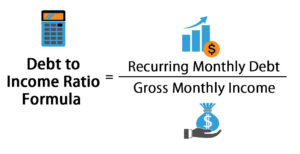
Debt-to-Income Ratio
When it comes to managing personal finances, understanding the debt-to-income ratio (DTI) is paramount. This financial metric plays a crucial role in various aspects of our lives, from applying for loans to planning for retirement.
How Does DTI Ratio Work?
To determine the DTI ratio, we need to understand the components involved. Debt includes all monthly obligations like mortgage payments, car loans, credit card bills, and other outstanding debts. Income, on the other hand, refers to the total money earned, usually on a monthly basis.
The formula for determining the DTI ratio is straightforward. By dividing total debt by total income and multiplying the result by 100, you get the percentage representation of your DTI ratio.
Types of DTI Ratios
There are different variations of DTI ratios, each serving a specific purpose.
- Front-End DTI Ratio: The front-end DTI ratio considers only housing-related expenses. It helps lenders evaluate a borrower’s capability to manage housing payments.
- Back-End DTI Ratio: The back-end DTI ratio includes all debt obligations, offering a comprehensive view of an individual’s overall debt load.
- Total Debt-to-Income Ratio: The total DTI ratio accounts for both housing expenses and other debts, providing a more comprehensive assessment of financial well-being.
How to Improve Your DTI Ratio?
- Reducing Existing Debts by paying off existing debts helps decrease the DTI ratio and demonstrates financial responsibility to lenders.
- Increasing Your Income by seeking opportunities to boost your income can positively impact your DTI ratio and overall financial stability.
- Avoiding Taking on New Debts by refraining from taking on new debts, unless absolutely necessary, can prevent an unfavorable DTI ratio.
FHA loans allow a max dti ratio up to 56% depending on the credit score. Conventional loans allow a max DTI ratio up to 50% depending on the credit score.
